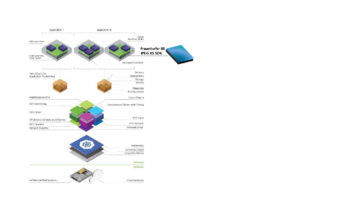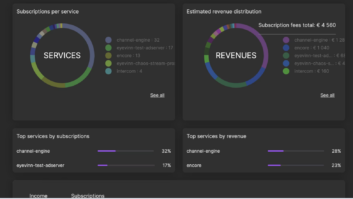
By Meg Cater
When the Digital Production Partnership (DPP) became the voice of major UK broadcasters and announced a new standard for the delivery of television programmes, they hoped to make positive ripples both within their companies and across the industry.
Now, with footage no longer arriving on tape or in disparate file formats, they’re saving time, money and headspace once lost to the trials of unifying divergent programme mediums. They’re also encouraging the adoption of standards that could increase efficiency and collaboration among everyone, from indie production houses in Dubai to Hollywood studios.
ITV began receiving programmes as files back in 2012 in order to improve on a then messy and difficult operation. “Our timelines were complicated because of the different types of files coming through,” says Rob O’Brien of ITV Creative, ITV’s in-house Creative agency. “It slowed the entire process down, taking a lot longer to get to the end production.”
However, making sure files are in a particular format is only part of the process; receiving these typically very large files quickly from multiple endpoints nationally and internationally required new software systems as well.
“Each broadcaster will receive tens of thousands of programme files each year,” says the DPP in its File Delivery Made Simple forum, “therefore the delivery method needs to be fast, reliable, secure and as automated as possible.”
After careful research, ITV Creative selected Signiant’s Media Shuttle as a gateway to send and receive file based content within ITV and with outside agencies. “We really like that Media Shuttle is in the cloud, and we don’t have to worry about infrastructure or single points of failure,” says O’Brien. “It gives us encryption, direct connectivity to local storage and accelerated file transfer, which is really cool.”
Media Shuttle’s CloudSpex functionality allows broadcasters to ensure the technical aspects of the DPP standard file format are met by rejecting anything that isn’t compliant. Using a cloud enabled function, Media Shuttle grabs the file metadata and checks that it is consistent with DPP HD or DPP SD formats.
“Having the files in the right format has made a big difference for us, but the method for bringing the files in has made an even bigger difference. We are really happy with Media Shuttle’s cloud based web portal,” says O’Brien. “Our portal is brilliantly branded, and we’ve had excellent feedback from production companies on how well it works and how simple it is to use.”
The SaaS or cloud based design of Media Shuttle is one of the reasons it has been well received. And, as we reach for higher file delivery standards across the industry, the benefits of SaaS are especially salient.
In particular, the scalable pricing models and global performance unique to SaaS are helping spread or ‘democratise’ the use of professional solutions once only available with a big enterprise budget and multiple data centres.
SaaS scales to fit any sized business — whether it’s a major broadcaster or a two-person post house — as well as the peaks and valleys all businesses go through.
Today, those production companies that were impressed by ITV’s branded portals and transfers can have the same technology for their own business. And the DPP’s hope to create ripples of improvement across the industry can be seen not only in the adoption of file based delivery standards, but through encouraging the adoption of cloud based technology as well.







